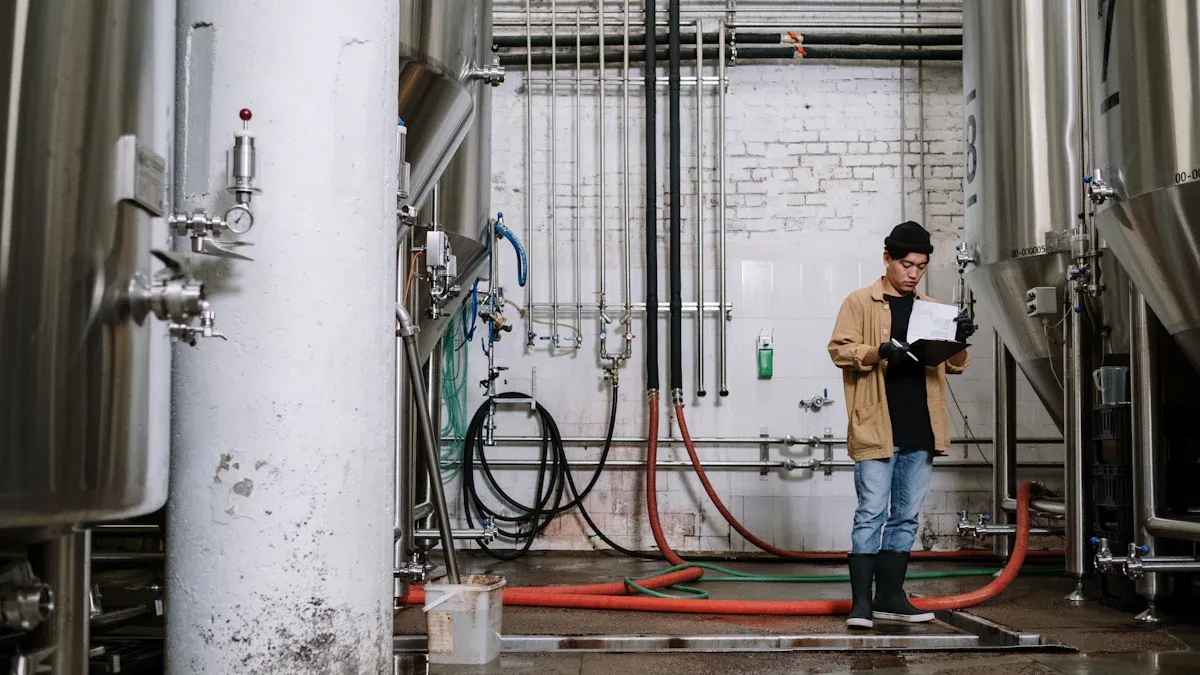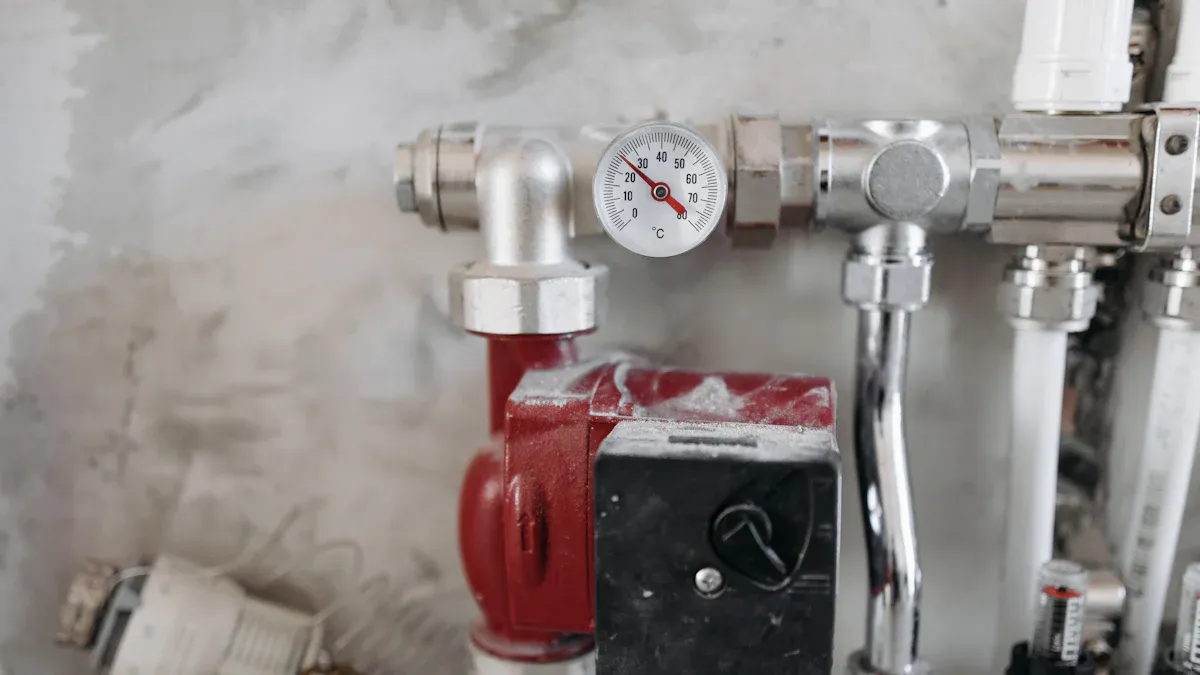
European standards play a vital role in ensuring solenoid valves meet safety and reliability benchmarks. These standards protect industrial systems from potential failures and hazards. Optimizing performance is equally important, as it improves efficiency and reduces downtime. By focusing on compliance and performance, you can choose solutions that enhance system safety and operational excellence.
Key Takeaways
- European rules make solenoid valves safe and dependable. Following these rules keeps your machines from breaking down.
- Better solenoid valve performance saves time and energy. This helps your work get done faster and smoother.
- Picking a good supplier is very important. Choose ones with CE marking and ATEX certifications for safety and quality.
Solenoid Valves and Their Role in Industrial Systems

Defining Solenoid Valves
A solenoid valve is an electromechanical device that controls the flow of liquids or gases. It operates by using an electric current to activate a solenoid coil, which moves a plunger to open or close the valve. This simple mechanism allows you to manage fluid flow with precision. Solenoid valves are compact, reliable, and versatile, making them essential in many industrial systems.
Key Applications in Industrial Systems
You will find solenoid valves in a wide range of industries. In manufacturing, they regulate the flow of chemicals, water, or air in production lines. In the oil and gas sector, they control the movement of fuels and gases under high pressure. HVAC systems use them to manage heating and cooling processes. Even in medical equipment, solenoid valves ensure the accurate delivery of fluids. Their ability to handle diverse tasks makes them indispensable in modern industrial operations.
Importance of Compliance and Performance
Compliance with European standards ensures that solenoid valves meet strict safety and reliability requirements. This protects your systems from potential failures and hazards. Performance optimization, on the other hand, enhances efficiency and reduces downtime. When you choose a solenoid valve that balances compliance and performance, you improve both safety and productivity. This dual focus is critical for achieving long-term success in industrial applications.
European Compliance Standards for Solenoid Valves

Overview of IEC 61508 and Functional Safety
IEC 61508 is an international standard that ensures functional safety in electrical, electronic, and programmable systems. It focuses on reducing risks in industrial environments. For solenoid valves, this standard ensures they operate reliably under different conditions. You can rely on IEC 61508-compliant valves to minimize system failures and protect workers. This standard also provides guidelines for designing and testing valves to meet safety requirements.
CE Marking and ATEX Certification
CE marking is a mandatory certification for products sold in the European Economic Area. It shows that a solenoid valve meets health, safety, and environmental protection standards. ATEX certification, on the other hand, applies to equipment used in explosive atmospheres. If you work in industries like oil and gas, ATEX-certified solenoid valves are essential. These certifications ensure your valves are safe and compliant with European regulations.
Safety Integrity Levels (SIL) and PFDavg Metrics
Safety Integrity Levels (SIL) measure the reliability of safety systems. They range from SIL 1 to SIL 4, with higher levels indicating greater reliability. For solenoid valves, achieving the right SIL ensures they meet your system’s safety needs. PFDavg, or average probability of failure on demand, is another critical metric. It helps you evaluate how often a valve might fail. By choosing valves with low PFDavg values, you can enhance system safety and performance.
Optimizing Performance in Solenoid Valve Solutions
Redundancy and Architectural Constraints
Redundancy plays a key role in improving the reliability of your industrial systems. By using multiple solenoid valves in critical operations, you can ensure that your system continues to function even if one valve fails. This approach minimizes downtime and prevents costly interruptions. However, you must also consider architectural constraints. Space limitations, power requirements, and system compatibility can impact how you implement redundancy. Planning carefully helps you balance reliability with practical design considerations.
Evaluating Suppliers for Compliance and Quality
Choosing the right supplier is essential for ensuring your solenoid valve meets European standards. Look for suppliers with a proven track record of compliance with certifications like CE marking and ATEX. Reliable suppliers often provide detailed documentation and testing reports to verify their products’ quality. You should also evaluate their customer support and after-sales services. A trustworthy supplier not only delivers high-quality valves but also supports you in maintaining system safety and performance over time.
Benefits of European-Approved Solenoid Valves
European-approved solenoid valves offer several advantages for your industrial systems. These valves meet strict safety and performance standards, reducing the risk of failures. They are designed to operate efficiently under various conditions, which helps you optimize energy use and lower operational costs. Additionally, compliance with European regulations ensures that your systems remain legally and environmentally sound. By choosing these valves, you invest in long-term reliability and peace of mind.
European standards ensure solenoid valves meet strict safety and reliability benchmarks. Optimizing performance enhances efficiency and reduces risks in your industrial systems.
Choosing the right valve requires careful evaluation of compliance, quality, and performance. By making informed decisions, you protect your operations and achieve long-term success.
Invest in European-approved solutions to secure safety, reliability, and peace of mind.
FAQ
What makes European-approved solenoid valves different from others?
European-approved solenoid valves meet strict safety and performance standards like CE marking and ATEX certification. These ensure reliability, legal compliance, and suitability for industrial environments.
How do I choose the right solenoid valve for my system?
Evaluate your system’s requirements, including pressure, temperature, and flow rate. Check for compliance with European standards and ensure the valve matches your operational needs.
Why is redundancy important in solenoid valve systems?
Redundancy ensures your system continues operating even if one valve fails. This minimizes downtime, prevents costly interruptions, and enhances overall reliability in critical applications.
Post time: Apr-10-2025
